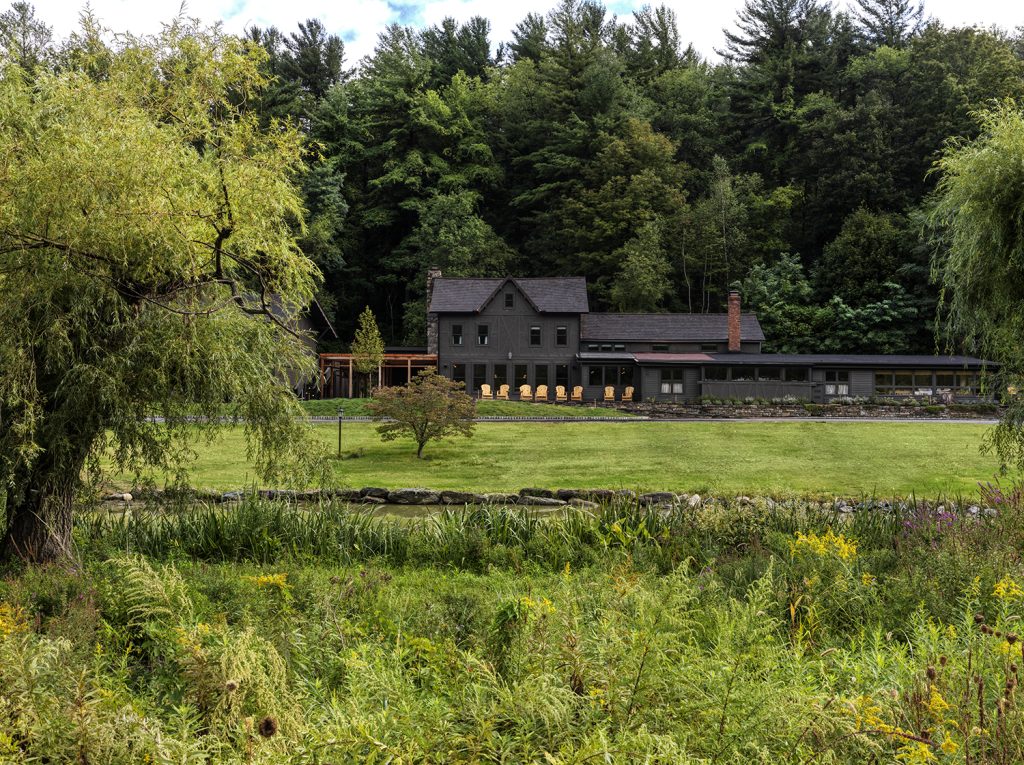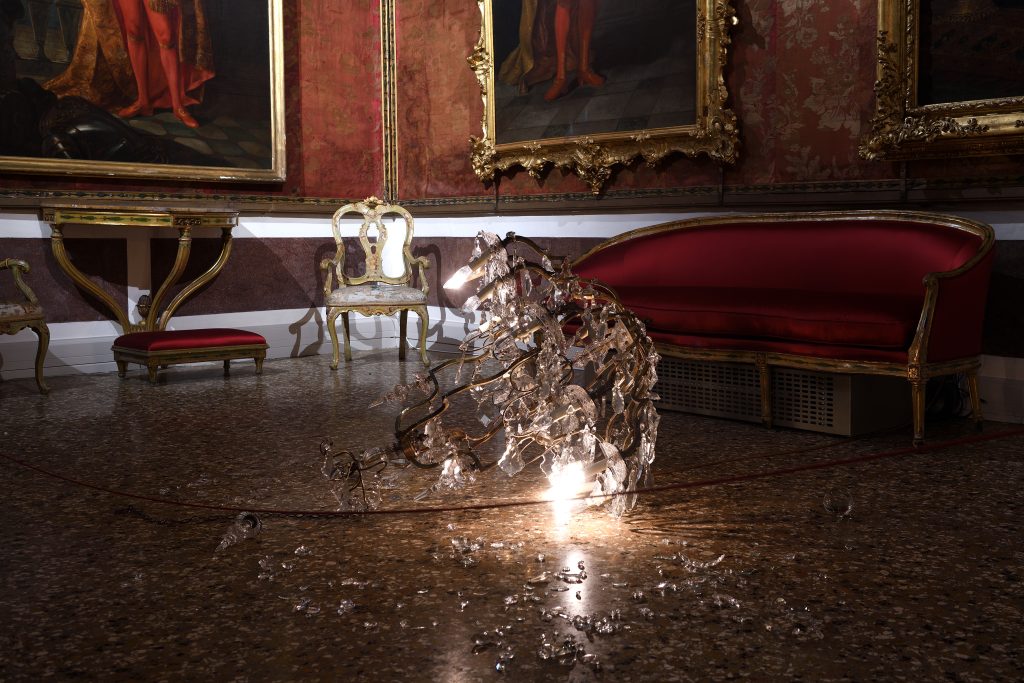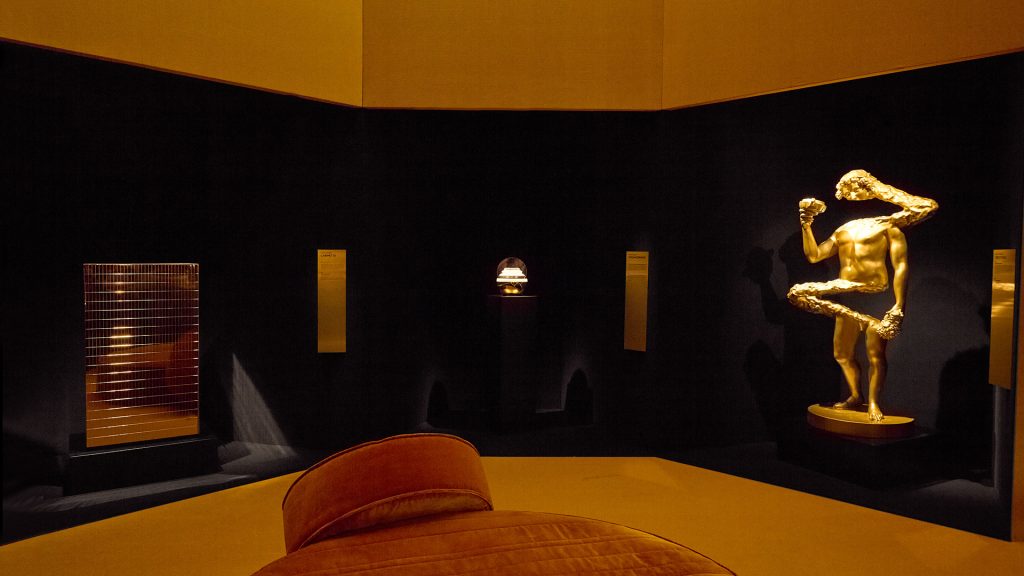Inside The Berkshire’s Quaint Little Cat Lodge
Contemporary design and an abundance of top tier amenities revitalize a beloved escape

Among the ever-expanding roster of idyllic hospitality destinations within reach of New York City, Little Cat Lodge stands apart for its particular blend of enveloping charm and thoughtful contemporary design. Formerly a bed and breakfast known as Swiss Hutte—familiar to most who have passed through this particular corner of the Berkshires, where New York State and Massachusetts meet—Little Cat Lodge encompasses 12 guest rooms, two suites, a cozy cocktail bar, a restaurant from executive chef Jason Bond, a heated outdoor pool, a barrel sauna and more—all at the base of the seasonal ski outpost Catamount Mountain. Under the vision of hotelier/restaurateurs Noah Bernamoff and Matt Kliegman (of Pebble Bar and Jac’s on Bond acclaim), the boutique mountainside getaway has become an enchanting all-season escape for anyone looking to après ski or settled down before exploring the region’s hiking trails.
With interiors by Loren Daye’s Hudson Valley-based studio, LoveIsEnough, existing Alpine flair was underscored and elements of minimalism introduced. Further, unifying local art and dollops of high design act as exclamation points from the comfortable rooms to the exciting social spaces. To learn more about the storybook flourishes and subtle touches, we spoke with LoveIsEnough designer Rebecca Hernández and studio director Chris Hudik who shared insight on the unique accommodation.

When you step into the Little Cat Lodge, you’re transported into an Alpine wonderland that’s also not affixed to any decade or period. It feels timeless—classic with contemporary flourishes. How did you achieve this through design?
Rebecca Hernández: This wasn’t necessarily intentional, but it is a great example of how working with an existing property can make for a very soulful project. Because we chose to maintain what worked for the existing hotel, use wood culled from the property, and commission local artists, makers and fabricators to bring the design to life.
Chris Hudik: Because the existing Swiss Hutte already had such an established Alpine vernacular, we knew from the beginning that we didn’t want to reinvent the aesthetic, but add to it in a complementary way. We worked to balance traditional Alpine materials and motifs with quieter, more streamlined Scandinavian and Japanese-inspired insertions. And embracing the outdoors was always top of mind.

How did you link the design language of public spaces with the guest rooms?
RH: We turned the volume up in the public areas when it comes to pattern, color and scale. A color that is just an accent in the public room suddenly becomes the color of an entire room in the restaurant, the textiles get chunkier and the more rustic materials—pebble dash, terrazzo, reclaimed wood—start to take over.
CH: For instance in the guestrooms we sourced locally reclaimed mushroom wood wall cladding—previously used as planter beds for mushroom cultivation—to complement the texture of the pre-existing restaurant and bar wall cladding, which we removed, gently cleaned/rehabbed and re-installed. There’s also a layer of custom artwork by local artist and now friend Esme Shapiro throughout that gives guests a familiar reference as they move through the property. And at all spaces—public and private—we consciously strove to invite guests into outdoor areas, whether at the gardens/terraces of the guestrooms, or the communal pergola, patio, woods path and firepit areas connected to the main building. We wanted people to be able to experience all of these outdoor spaces in all four seasons.

The destination also nods to nearby Catamount mountain and its ski offerings, but almost sets it out of sight in order to create an enveloped universe unto itself. Can you speak to this?
RH: The hotel is in service of the nature surrounding it, and that obviously includes ski mountains, but not everyone comes to the area to ski. This is a hotel that can be enjoyed year round, and we made an effort to frame the views of the mountain as a constant reminder of the beautiful landscape surrounding you. We are fans of ski culture, but we’re also fans of walking, sitting around a fire, smelling flowers, sharing meals and all of the other life-giving activities that guests can enjoy.
CH : Having the ski mountain right across from our site gave us a beautiful scene to embrace and express. So we made lots of conscious decisions to things like seating height at the bar that turns your head to the mountain, drapery mounting heights to control specific views or trimming the existing willows along the perimeter of the property, that all aimed to put guests in position to naturally catch glances of the mountain while within the property. Within those same decisions, we aimed to obscure the view of Catamount’s parking lot as much as possible, so that the site remains cozy, natural and inward-looking, just with a beautiful backdrop.

Can you speak to the custom components of the design (like the beds)?
RH: All of the guestroom furniture was custom designed. The majority of it was fabricated out of wood culled from the property by New York Heartwoods and it was fabricated by our friends Primary Visual. The design was dictated by the amount of wood we had, and they are undoubtedly modern.
CH: We wanted the insertions, like custom beds and vanities in the guestrooms, to be in a more modern design language, to act as a counterpoint to the traditional Alpine textures and textiles that surround them. So we designed low-slung platform beds sans headboards and midcentury-inspired vanities with concrete countertops.

And did you keep anything from the original Swiss Hutte restaurant and hotel?
RH : Yes, a lot! We removed all of the paneling in the now lounge and restaurant from the walls, stored it, and reinstalled it after updates had been made to the building. This saved money, but it was also an attempt to maintain a feeling the hotel had that was beloved by local clientele. It feels similar because such a big part of its materiality was maintained. We also kept a lot of decorative elements—mugs that locals had used in the past, as well as other knick knacks. But some of the vendors that the original owners had used for ceramics, like Berkshire Pottery, are still in business, so we went back to them and purchased more items. A lot of people who worked on this project had visited the previous iteration and were happy to bring it back to life.
CH: Lots was kept from the Swiss Hutte from finish materials to the general layout of spaces, but there were some re-configurations that we identified early on that we thought could help in its new iteration. For instance the prior owners ran the property as a bed and breakfast, so a lot of spaces functioned as multi-use: The hotel check-in and restaurant host previously shared the same space which functioned as the lobby, the owners also lived in an apartment upstairs. Since it’s technically no longer a bed and breakfast, we moved the hotel check-in to its own area at the far end of the main building, closest to the overnight parking, so it’s the first space you encounter after exiting your vehicle. The host stand is now specific to the restaurant and bar and we were also able to carve out a cozy PDR from some of the previous lobby zone. The existing owner’s suite has become a deluxe guest suite.

Is there anything you feel like people need to know about the design that may have been overlooked?
RH : A lot of work was done to re-landscape the property, reconfigure circulation, improve parking conditions and update the building’s systems to make the hotel better suited for contemporary travelers. We’re happy that those adjustments aren’t obvious, but sometimes it’s the work that isn’t easily seen that makes a big impact. The flow of the hotel is completely different, but the feeling remains the same.
CH : One fun fact is that the New York/Massachusetts state line runs directly through the main building, so you can check in and have drinks in Mass, but eat dinner and sleep in NY. And even though it’s not a gigantic property, there’s a ton to explore outside—from the pool, pond and meadow in the summertime, to the sauna along the woods path and fire pits in the colder months. The original Swiss Hutte had also been added on to many times throughout the years, which we discovered during demo. One example is that the old bar ceiling was much, much lower than it is now. When we poked a hole through it we saw that there was an entire second roof that had been built at some point overtop of a much lower one. Removing the low one allowed the space to really expand and breathe.













What are your thoughts?